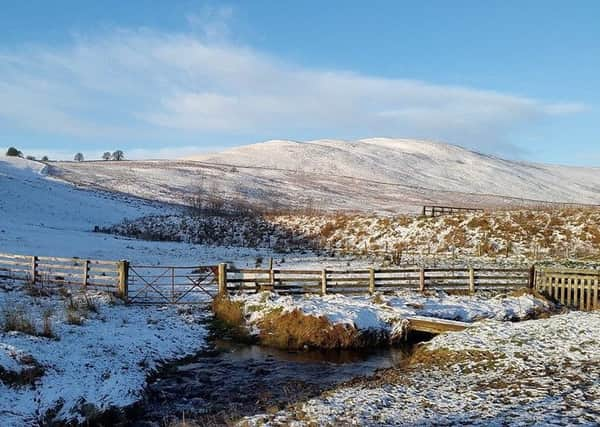Regional Land Use Frameworks can benefit us all – Dr Andrew Midgley


This is an increasingly pressing issue. The Scottish Government has acknowledged the climate and biodiversity emergencies and respected bodies like the Committee on Climate Change have suggested that we will only meet our new emissions reduction targets if there is significant land use change. Land is, therefore, a critical asset and we need to make sure we are using it effectively in the context of both the climate and biodiversity crises.
Last year the Committee on Climate Change published a report on climate and land use in the UK and concluded that the current approach is not sustainable.
Advertisement
Hide AdAdvertisement
Hide AdLand can deliver a wide range of things – it can be used to produce food or to grow timber, sequester and store carbon, be managed to help reduce flooding, provide a home for nature and sites for producing renewable energy.
It also provides beautiful landscapes for everyone to enjoy. The list goes on. But today, land is often used with only a few of these benefits in mind. The focus on food, timber and game management sometimes means that many of the wider benefits are overlooked or are second order concerns.
As a result, Scotland’s land is not always being managed in a way that optimises the benefits it could deliver to society as a whole.
At the same time, the committee has also identified that Scotland has the ability to meet emissions reduction targets earlier than the UK as a whole because of the potential we have to use our land resources differently.
The committee suggests that some agricultural land could be put to another use and it advocates a substantial increase in the area of woodland.
We stand at a point in time when we recognise that current land use policies are far from sustainable and we need land to deliver more.
This is why we need to look again at land use. Some fresh thinking is required. We need to think strategically about what we want land to deliver and we need to design better policies to shape the way we use our limited land resources.
Fortunately, the Scottish Government has recognised these issues.
Advertisement
Hide AdAdvertisement
Hide AdIt has announced a more regional approach to land use decision-making recently in its Programme for Government, committing to the creation of new regional partnerships which will produce Regional Land Use Frameworks by 2023.
This approach should lead to better and more informed choices about land use and it is welcome news. It represents a step towards more critical thinking about how we can optimise land use and towards a policy and financial support regime for rural land managers that is much more focused on delivering public goods. Developing a regional approach to land use won’t be without its challenges. Land use can be contentious – with many different parties looking out for their own interests – but regional partnerships can hopefully be the focus for some positive conversations about current land use and future aspirations.
We should proceed carefully because whilst change is necessary it is important to remember that people’s livelihoods and communities may be affected. Nonetheless, the fact it could be difficult should not put us off – the prize is too great.
What should these regional partnerships do? Details are still to be worked out, but Scottish Environment LINK believes the partnerships should undertake a comprehensive analysis of land use and management in their region and identify the key opportunities to enhance the delivery of services from the land.
The partnerships would then produce Regional Land Use Frameworks that would include a set of recommendations to the Scottish Government about regional priorities for land use and indicative funding needs. The Scottish Government would then make decisions about the allocation of funding and targeting.
This is in contrast to the current situation where large amounts of public money are spent, often in ways that perpetuate the unsustainable use of land. The goal is a more rational approach that uses public money in a way that optimises land use and maximises the public benefits from that spend. We can do better. We can achieve more sustainable land use. We must work together to grasp this opportunity and identify land use plans and policies that benefit society as a whole.
Dr Andrew Midgley, senior policy officer at RSPB Scotland and member of LINK’s Land Use subgroup.